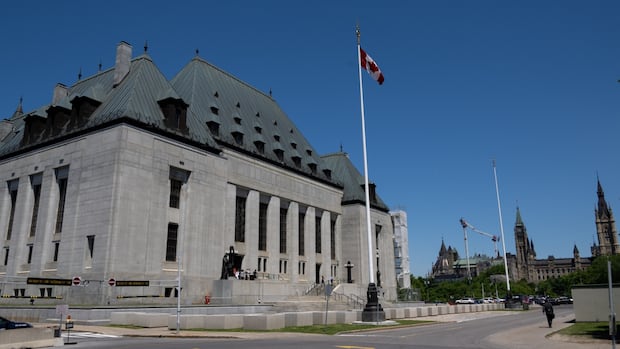Outside a rural Saskatchewan elementary school on a fall morning in 2020, Paul Wilson and three others parked their truck and called 911 as a woman they were with experienced a fentanyl overdose.
When police arrived, paramedics were already treating the woman. A Mountie who responded to the scene smelled marijuana from the vehicle and noticed a baggie which looked like crystal meth on the ground outside the driver’s side door.
Wilson was arrested for drug possession, and a search later turned up a bag with guns, false identity documents and a quantity of “apparent drugs.”
Wilson was convicted on multiple gun charges in 2022, but the Saskatchewan Court of Appeal found the drug possession arrest was unlawful under Canada’s Good Samaritan law, which is meant to shield people from arrest after they seek help for someone in medical distress.
The thorny legal questions raised by the case are now set to be tested in the Supreme Court of Canada, and harm reduction advocates say the case will determine the future of the current Good Samaritan law.
The hearing Tuesday will hear arguments on the powers of police to arrest people at the scene of a drug overdose and whether the 2017 law, known as the Good Samaritan Drug Overdose Act, is clear about those powers.
Lawyer DJ Larkin, executive director of the Canadian Drug Policy Coalition, said Monday that Wilson and others with him “did the right thing” by calling for medical help, likely saving the person’s life.
Larkin said the Good Samaritan law is supposed to immunize from arrest people calling for help for those experiencing an overdose, and a coalition of drug policy groups is intervening in the case to provide the court with a “path” to clarify the law’s public health purpose.
“These laws need to be clear and easily understood. If anyone [is] needing to take action in an emergency, they need to know the risk they face,” Larkin said. “You shouldn’t need a law degree to understand what will happen if you call 911.”
The Early Edition7:34Supreme Court reviews Good Samaritan
Harm reduction advocates are intervening in a Supreme Court case to seek clarity on law meant to prevent arrests during an overdose call.
The groups, including the Harm Reduction Nurses Association and the Association of Addiction Workers of Quebec, held a briefing Monday to outline their role as interveners in the case and to highlight the legal issues at play.
They claim the high court’s decision will have national ramifications for people who call 911 for overdoses and whether they’re safe from arrest if they remain at the scene.
Corey Ranger, president of the Harm Reduction Nurses Association, said the organization provides naloxone training for overdose prevention, telling those they train that the Good Samaritan law will protect them from arrest at the scene of an overdose.
“We tell people that you must stay with the person who overdosed, that leaving them behind is a risk for death,” he said. “If our education has to change … we’ll see a lot more people abandoned at the scene of an overdose.”
Ranger and Larkin said the groups are intervening in the case, fearing that a lack of clarity in the Good Samaritan law will cause people to delay or avoid calling 911 for overdoses or leaving the scene in fear of being arrested when police arrive.
“If we want fewer workers finding people dead in tents, alleyways, public restrooms, then we must not compromise on the Good Samaritan provision,” Ranger said.
Lawyer Maxime Bedard said the “primary question” the high court panel will have to answer is whether police can legally arrest people for simple drug possession at the scene of an overdose, as Wilson was back in 2020.
Wilson was arrested for the offence but not charged with drug possession, though police used the initial arrest as a pretext for the search that turned up the guns that led to the firearms charges.
Larkin said the groups hope the Supreme Court’s decision in the case will provide a “guiding light” to courts across the country.
“The court has the opportunity to decide this case in a way that provides a beacon for other courts so that we can prevent harm so that we can save the lives of our loved ones and our community members,” Larkin said.


